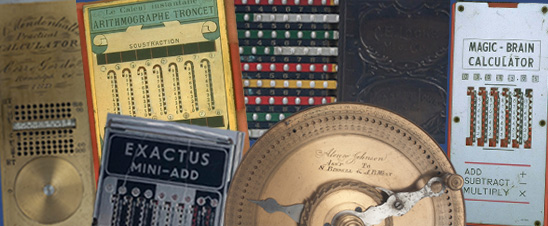This notched band adder has nine bands, eight bracket-shaped columns, and nine display windows. It has a black plastic back, a metal cover plate, and a metal stylus. A zeroing bar is across the top. The stylus fits on the side.
- Description
-
This notched band adder has nine bands, eight bracket-shaped columns, and nine display windows. It has a black plastic back, a metal cover plate, and a metal stylus. A zeroing bar is across the top. The stylus fits on the side. There are two rows of numbers alongside the columns, one for addition and one for subtraction. There are no numbers along the extreme edges of the columns on either side. The machine was imported from West Germany.
-
Compare to 1980.0787.01 and 2013.0197.01.
- Location
-
Currently not on view
- date made
-
ca 1955
- distributor
-
Thoresen, Inc.
- ID Number
-
MA.336448
- accession number
-
1977.1159
- catalog number
-
336448
